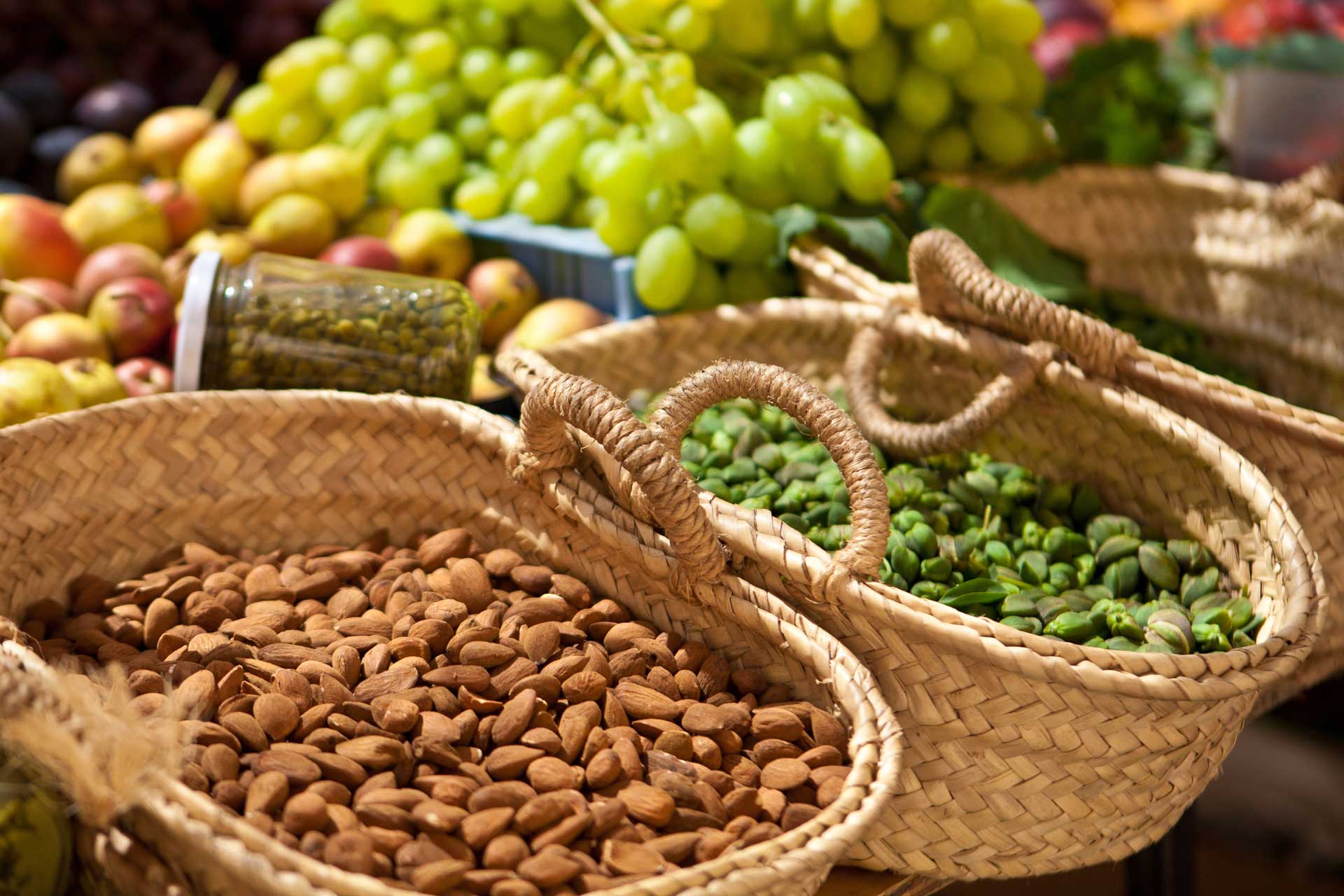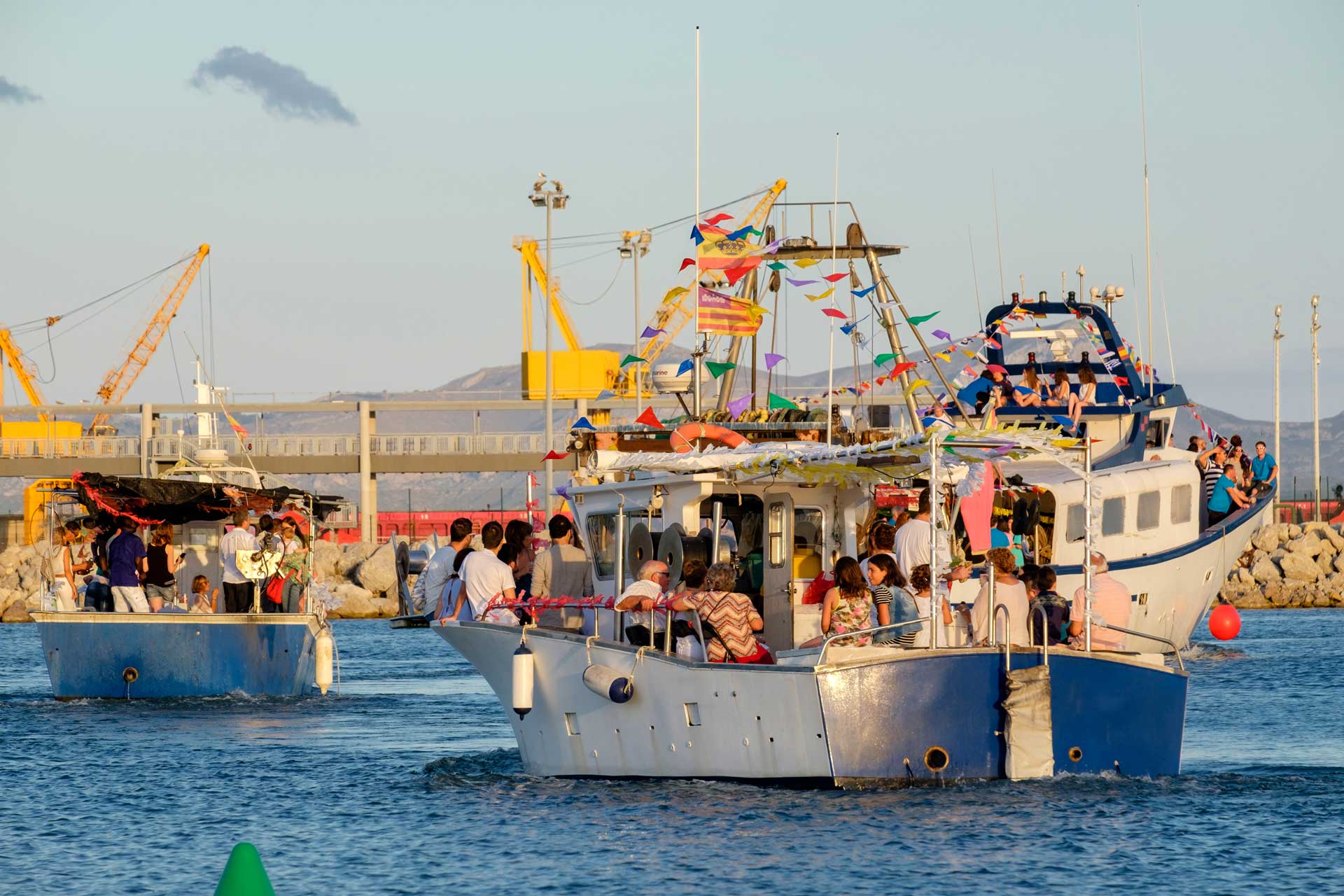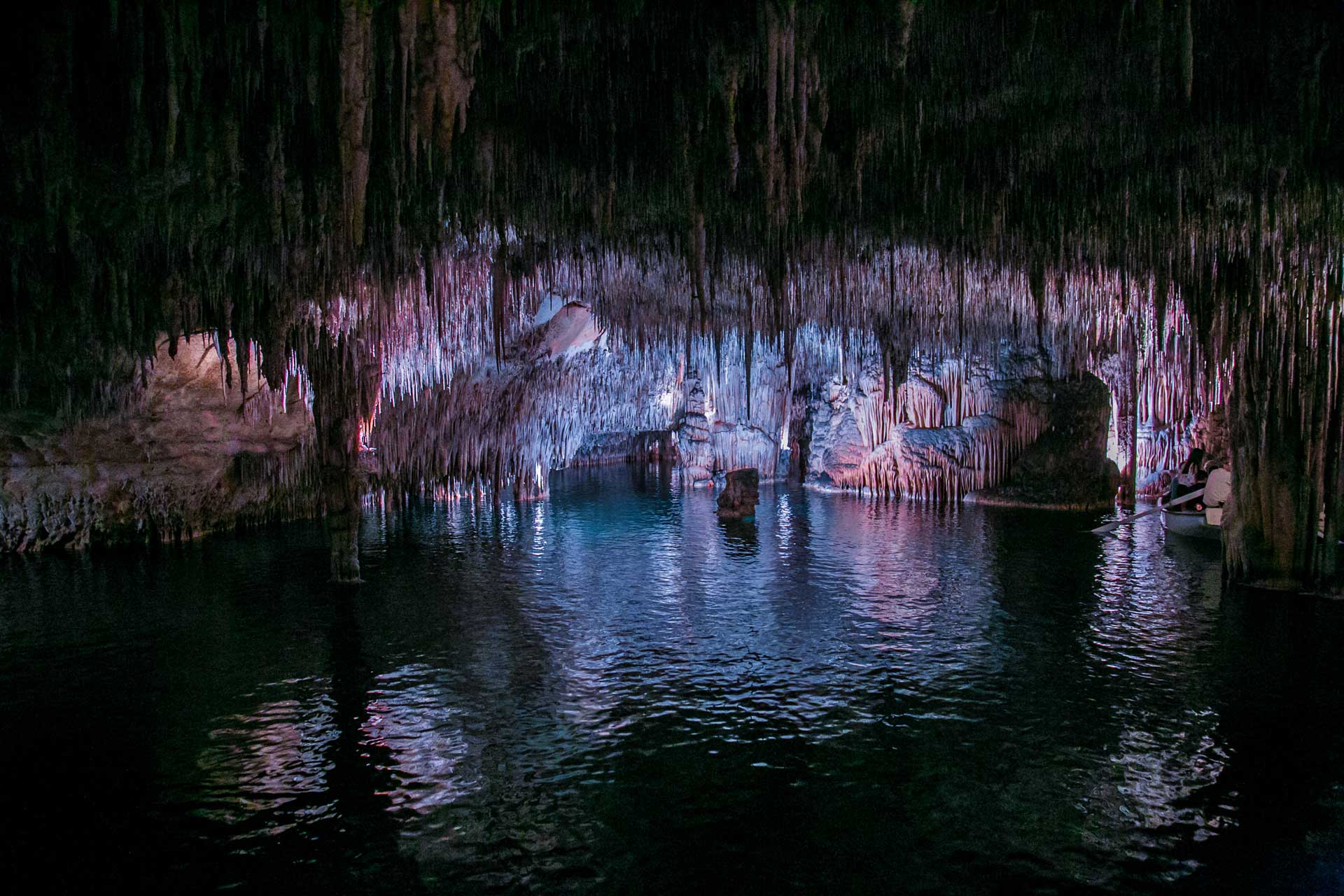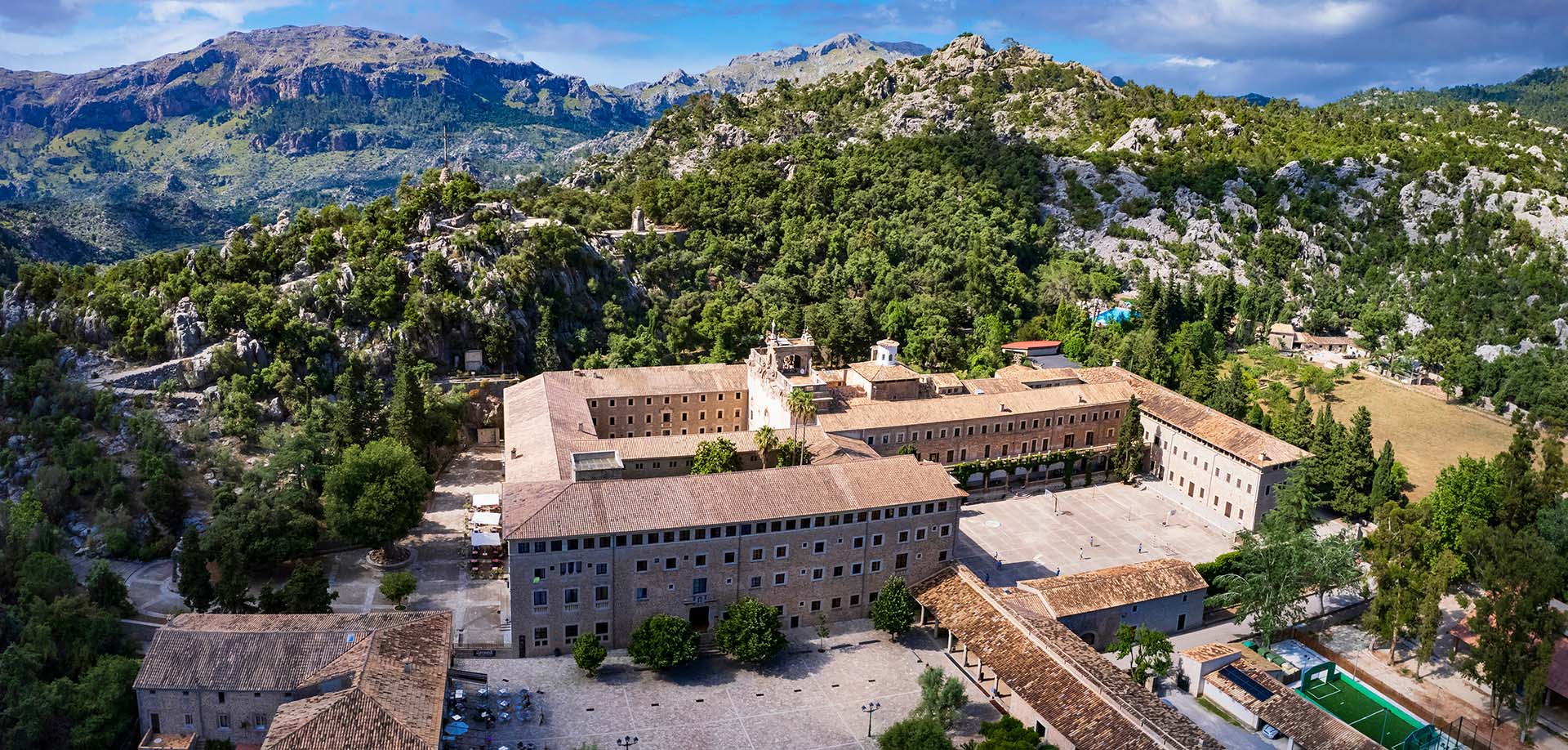Sineu, located in the heart of Mallorca, is a town with a rich history and vibrant culture. This charming place, known for its iconic weekly market and significant heritage, offers an authentic experience deeply rooted in Mallorcan traditions.
In this article, we will explore the peculiarities that make Sineu a must-see destination for any visitor to Mallorca, especially for those interested in culture, history and local traditions.
Contenidos / Contents
Orography of Sineu
The orography of Sineu, located in the geographical center of Mallorca, is mostly flat and is part of the large plain known as Es Pla.
This central region of the island is known for its extensive cultivated fields, fertile soils and the presence of small hills.
The flat topography of Sineu and its surroundings is ideal for agriculture, which has historically contributed to Sineu being an important agricultural center.
This area is not only important for agriculture but also for livestock farming, and the landscape is characterized by rustic farms and plots of land bounded by dry stone walls, a distinctive feature of rural Majorcan rurality.
In addition, the town is dotted with traditional windmills, which were once used to pump water and grind grain, and today are iconic symbols of this area of the island.
History of Sineu
The history of Sineu goes back to prehistoric times, with evidence of human settlements dating back to the Talayotic period. These early inhabitants left behind monumental stone constructions known as talayots, which can still be admired today in the surroundings of the town.
During the Roman occupation, Sineu gained relevance as an agricultural center, but it was with the arrival of the Muslims when it really began to take shape as an urban center, thanks to its advanced irrigation and cultivation systems.
Medieval period
The medieval period marked a turning point in the history of Sineu, especially during the reign of Jaume II (Jaume II), King of Mallorca, in the 13th century.
Jaume II chose Sineu as one of his places of residence, giving it the title of Poble Reial (Royal Town) which gave it a remarkable political and economic importance. This historical fact is reflected in the construction of several significant buildings, such as the Palau Reial (Royal Palace), which would later become a convent.
During this time, Sineu also became an important center for the agricultural and livestock fair, a tradition that endures to this day with its famous weekly market.
Recent development
In recent centuries, Sineu has maintained its agricultural and artisanal character, carefully preserving its rich cultural heritage while adapting to the changes of modern times.
Although it has experienced the natural development of a contemporary town, it has managed to avoid tourist overcrowding, thus preserving its traditional charm and authenticity. Today, Sineu is appreciated by locals and visitors alike for its market, its well-preserved medieval architecture, and its vibrant cultural scene, which includes popular festivals, folk music and local crafts.
This balance between preservation and modernization makes Sineu an exceptional example of how a town can maintain its identity and heritage over the centuries, offering visitors a unique window into Mallorca’s history and culture.

Tourist attractions of Sineu
Sineu Market
The Sineu Market, held every Wednesday, is one of the oldest and most emblematic markets in Mallorca. This market is not only a place for buying and selling products, but also a vibrant social and cultural event.
Here, visitors can immerse themselves in a typically Mallorcan atmosphere, exploring stalls offering everything from fresh fruits and vegetables to local handicrafts and clothing. In addition, the market is famous for its animal sale section, a rarity on the island, where you can observe a unique spectacle of exchanges and negotiations.
This market reflects the agricultural and livestock importance of Sineu and is an authentic cultural experience for any visitor.
Church of Santa Maria de Sineu
The Church of Santa Maria de Sineu is one of the most significant and photogenic buildings of the town. Gothic in style, its construction began in the thirteenth century, and has undergone several restorations and extensions over the centuries.
It has an imposing bell tower and an interior that houses works of religious art of great value, including a Baroque altarpiece of considerable beauty. The church is not only a place of worship, but also a testimony to the rich historical and artistic legacy of Sineu.
Other places of interest
- The Palau Reial: This former royal palace, which served as a residence for Jaime II, is a historical landmark of Sineu. Although it was transformed into a convent, its architecture still reflects the importance it had in medieval times.
- Museum of Sineu: For those interested in local history and culture, the museum offers a detailed look at the evolution of Sineu through time, with exhibits ranging from prehistoric times to the present day.
- Plaça del Fossar: This square is the social heart of Sineu, surrounded by cafes and stores occupying charming buildings. It is an excellent place to rest, enjoy a drink and watch the comings and goings of the town’s daily life.
- Hiking and cycling routes: The surroundings of Sineu offer beautiful rural landscapes, ideal for exploring on foot or by bicycle. These routes allow visitors to enjoy Mallorca’s nature and discover old fincas, windmills and vineyards.
These attractions make Sineu a destination that combines history, culture and natural beauty, offering visitors a varied and enriching experience in the heart of Mallorca.
Sa Fira de Sineu
Sa Fira de Sineu is one of the most emblematic fairs in Mallorca, held in Sineu on the first Wednesday after the first Sunday in May.
This fair has a history that dates back to the Middle Ages, being one of the oldest on the island, officially established in 1318 by King Sancho I of Mallorca. Sa
Fira de Sineu was originally an agricultural and livestock fair, and although it still maintains that spirit, today it has expanded to include a wide range of activities and attractions.
The heart of Sa Fira is still the livestock market, where farmers from all over the island come to buy and sell animals. In addition, there is an agricultural market with stands selling tools, machinery and local products.
The fair is also a showcase for local artisans, who offer handmade products, from ceramics and leather to jewelry and clothing. It is a perfect opportunity for visitors to purchase unique souvenirs and high-quality items.
During Sa Fira, Sineu hosts exhibitions that can include everything from traditional farming techniques to the latest innovations in the industry. Visitors can learn about Mallorca’s agricultural culture and practices.
Throughout the day, various cultural activities are organized, including live music, folkloric dances and theatrical performances, all celebrating Mallorca’s cultural heritage.
Sa Fira de Sineu is not only a fair for commerce and fun, but also plays a vital role in the preservation and promotion of the culture and traditions of Mallorca. It is a day when the town of Sineu fills with life and color, and becomes a meeting point for residents from all over the island, as well as tourists looking to experience the authenticity of the Mallorcan festivities.
The fair is a manifestation of Sineu’s identity and its historical role as a center of commerce and social gathering. During Sa Fira, the streets and squares of Sineu reflect the pride and joy of its people, offering all who attend an unforgettable experience celebrating the history, community and vitality of this island.
Local gastronomy
The local gastronomy of Sineu is a mirror of the Mediterranean, impregnated with the agricultural and livestock traditions of Mallorca.
Among the typical dishes that define its rich cuisine, the Frit Mallorquí stands out for its mixture of roast pork or lamb with potatoes and peppers, all seasoned with island herbs.
The Arròs Brut is another favorite, with its deep, rustic broth embracing meats, sausages and vegetables in a spicy, dark rice.
The Sopes Mallorquines, thick soups of brown bread and vegetables, ideal for the cooler months, while the Porcella Rostida, a crispy roast suckling pig, marks traditional celebrations and feasts. And to sweeten the experience, there’s nothing like a ensaimada, the swirled, light pastry that is the hallmark of Mallorcan confectionery.
Recommended Restaurants
- Celler Son Toreo: Known for its authentic Mallorcan food, this restaurant is a favorite among locals and visitors alike. It offers a menu that includes traditional dishes such as roast suckling pig and frit mallorquí.
- Molí de’n Pau: Known for its cozy atmosphere and traditional Mallorcan cuisine, it is famous for its traditional Mallorcan cuisine and ambience that captures the essence of the local culture. This restaurant offers an authentic dining experience, with a selection of dishes that highlight the island’s typical ingredients and recipes.
The gastronomic offer at Sineu is a journey through flavor that tells the story, the terroir and the people of Mallorca, making each meal a memorable and enriching experience.
How to get to Sineu
To get to Sineu, visitors have several options, mainly via public transport or by car, since Sineu is located in the center of the island of Mallorca and has good road connections.
Public transport
Public transport is a convenient option for those who prefer not to drive. Sineu is well connected by train, being a stop on the line that runs from Palma to Manacor. This train service offers a scenic and relaxing way to reach the town, allowing travelers to enjoy the rural scenery of the island.
Here you can find the train information to Sineu.
In addition, there are bus services connecting Sineu with other towns, although they may be less frequent. It is advisable to check schedules in advance, especially outside of peak season, to make sure they match your travel plans.
Here you can find the Palma-Sineu-Palma timetables, with stops in Algaida, Pina and Lloret.
Car
Getting to Sineu by car is quite easy thanks to its central location. From Palma, you can take the MA-13 freeway and then continue on the MA-3240 secondary road directly to Sineu.
The trip usually takes around 30 to 40 minutes, depending on traffic. Driving to Sineu offers the flexibility to explore the region at your own pace and the possibility to visit other nearby attractions throughout the day. Upon arrival in Sineu, parking can be found on the outskirts of town or near the center, depending on the time of day and time of year.










